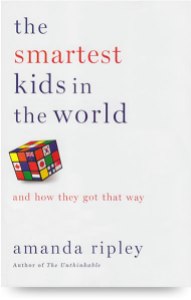 This post is part of an original series created by librarians/media specialists across Central Minnesota featuring books.
This post is part of an original series created by librarians/media specialists across Central Minnesota featuring books.
Title: The Smartest Kids in the World: And How They Got That Way by Amanda Ripley.
Reviewed by: Maria Burnham, Media Specialist at Sauk Rapids-Rice High School
Before this book, I hadn’t read a book about education in a while, and I’m always curious to read about how other countries/places run their educational system.
Although I wasn’t a big fan of the jumpy nature of the narrative, I did find the content, findings and students to be fascinating. Amanda Ripley interviewed and studied the educational system of three countries (Finland, Poland, and South Korea) all the while working with three American students who traveled abroad to these places for a year of schooling.
Much of the findings were quite interesting. For example, many South Korean students are sleeping all day during their public school classes because they are up so late studying in their hagwons in the evening. But perhaps the most interesting part of the whole story is the view on standardized testing. Ripley chose these regions because they typically score well on a nation-wide standardized test that ask students to answer questions using critical thinking skills, not necessarily just an application of a math formula or reading comprehension.
My absolute favorite part of the book, however, was the first appendices that talked about what all of this means for us, here in the United States.
This is a pretty quick read, which I can’t always say for a book that’s in my professional collection of my library:)
